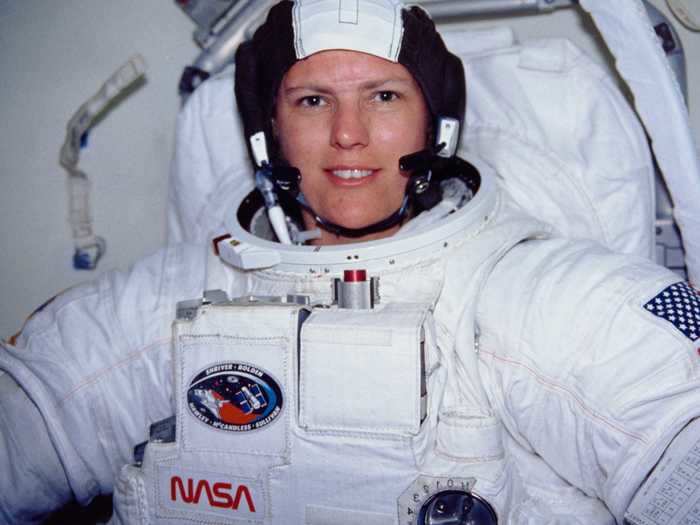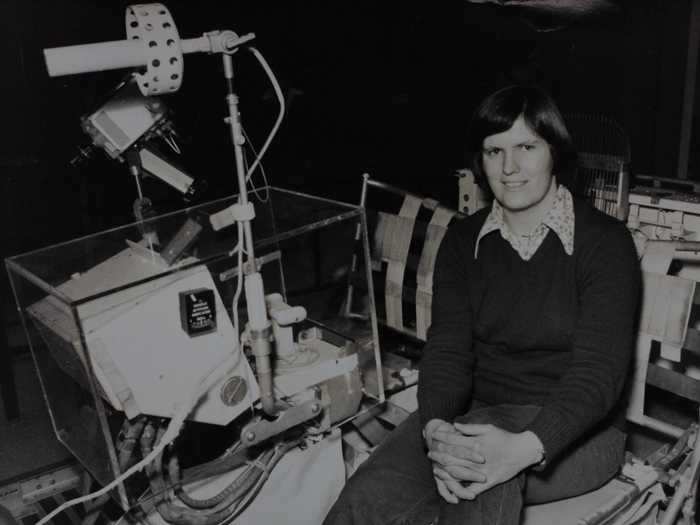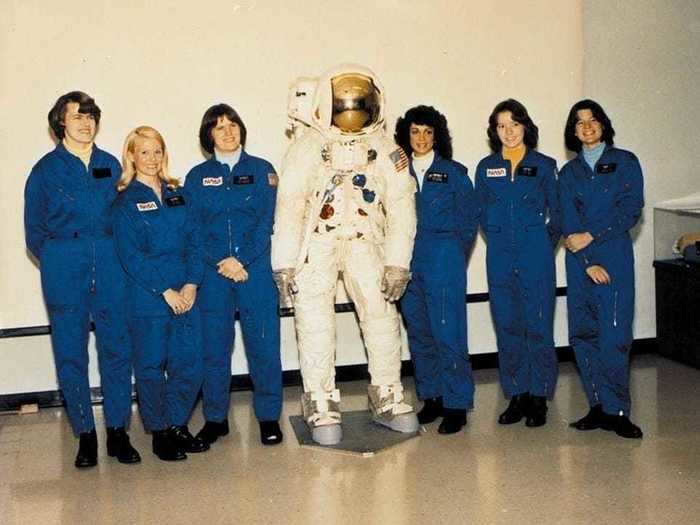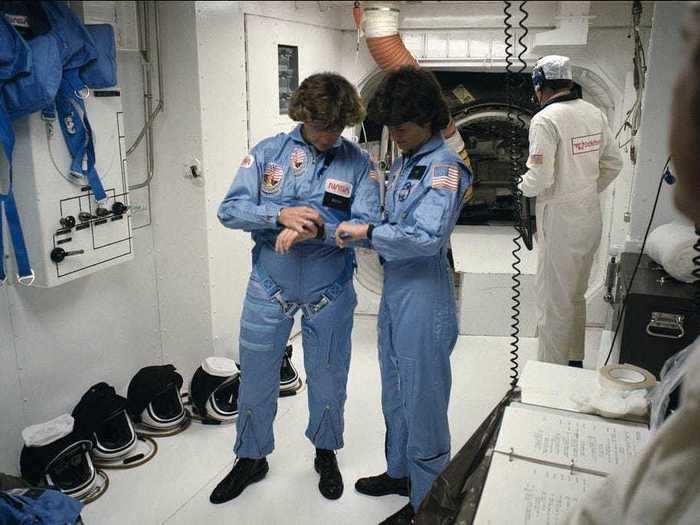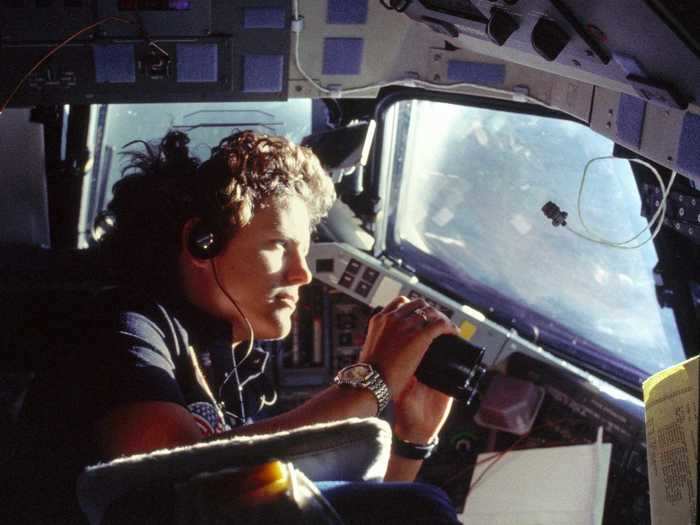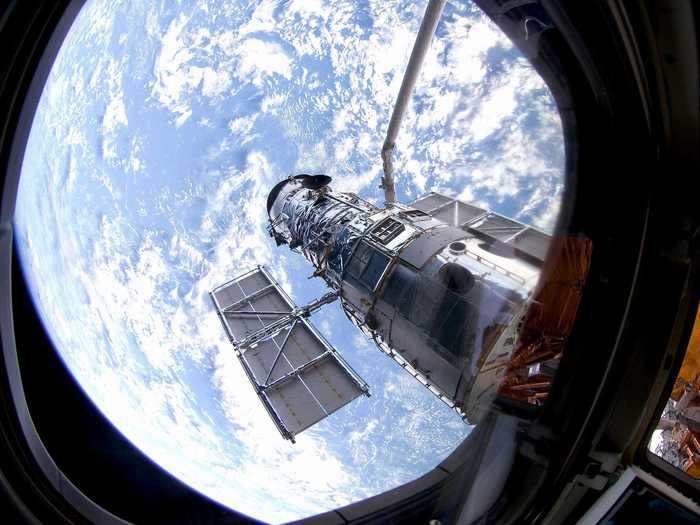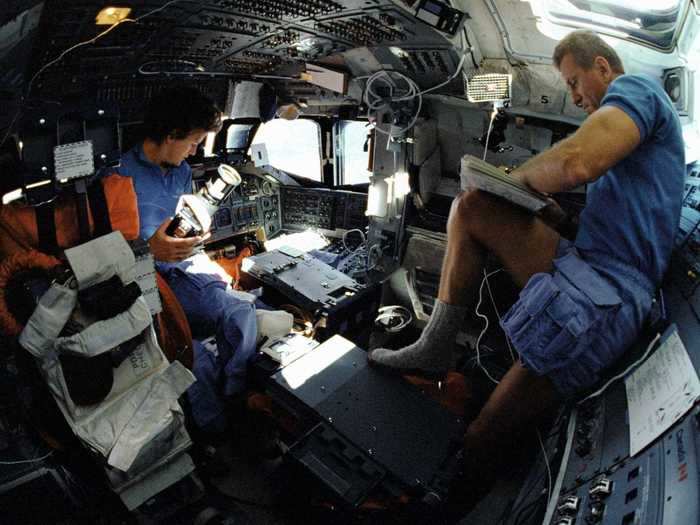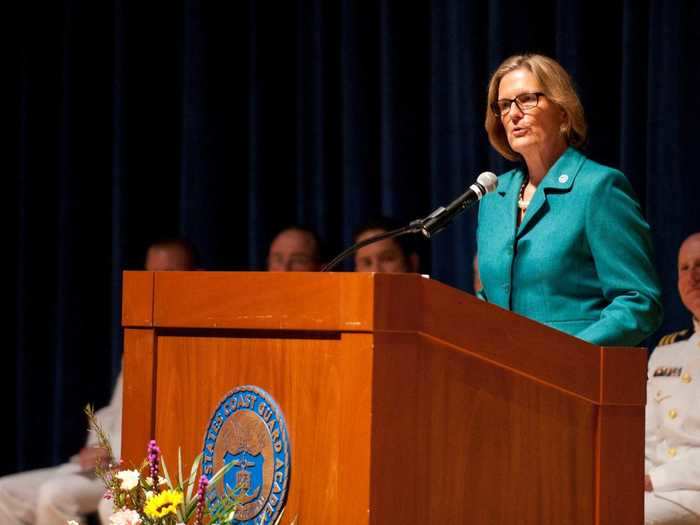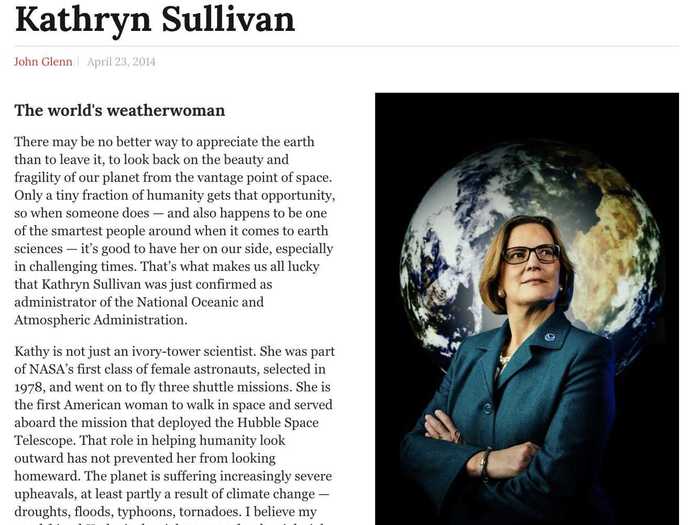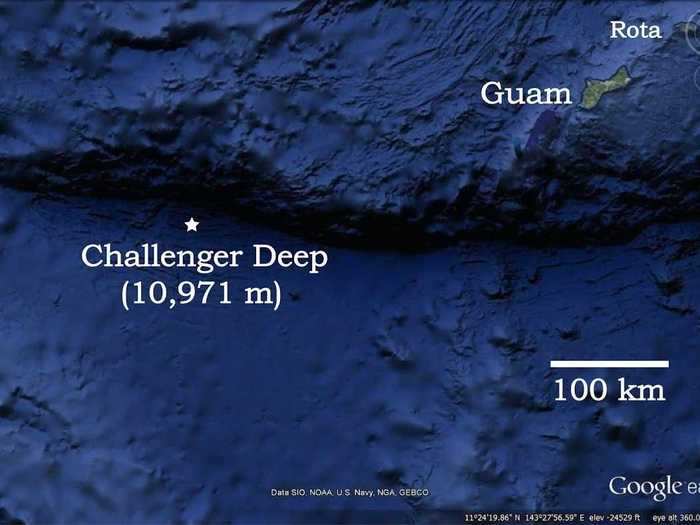NASA portrait of astronaut Kathy Sullivan.NASA
- Former NASA astronaut Kathy Sullivan became the first woman to travel to Challenger Deep, the deepest point in any ocean, on Sunday.
- Sullivan was the first American woman to walk in space, and also served as the administrator of the National Oceanic and Atmospheric Administration.
- Take a look at Sullivan's record-breaking career.
Former NASA astronaut Kathy Sullivan became the first woman and eighth person ever to reach Challenger Deep, the deepest point in any ocean, on Sunday.
It wasn't the first record-breaking moment of her career.
Sullivan, who is now 68, was one of the first women selected for the NASA Astronaut Corps in 1978. She became the first American woman to complete a spacewalk in 1984, outside the Challenger space shuttle.
After her astronaut days ended, Sullivan led the National Oceanic and Atmospheric Administration.
Sullivan almost didn't pursue a career in science — when she entered college, she planned to major in languages and become a translator. But she applied to NASA's call for astronauts on a whim, assuming she wouldn't be chosen. Since then, Sullivan's career has taken her to some of the most interesting places on and off of Earth. Here's how she did it.
Kathy Sullivan grew up in Paterson, New Jersey. Her dad was an aerospace engineer, and she was interested in space from a young age.
Kathy Sullivan aboard Space Shuttle Discovery, April 1990.
Space Frontiers/Getty
She told NASA in an interview that she remembers going out into her front yard with her father at age 6 to try to see Sputnik 1 — the satellite the Soviet Union launched in 1957.
"My actual understanding, of course, of what was going on was tiny, but it was something dramatic," Sullivan said.
Going into college, Sullivan thought she wanted to be a language major, since she was good at picking up new languages. But in her first year, she took a marine biology class, which pointed her towards the sciences.
Kathryn Sullivan at NASA headquarters in 1980.
San Diego Air & Space Museum Archives/Flickr
She graduated from the University of California, Santa Cruz, with a degree in Earth sciences in 1973. Sullivan got her Ph.D. in geology from Dalhousie University in Canada in 1978.
One Christmas, while she was visiting her family, Sullivan's brother pulled up NASA's application and encouraged her to apply.
"'You should try. They say they want women and minorities to apply, and how many 26-year-old female PhDs can there be in the world? You should give this a try,'" he told her, according to Sullivan's telling of it in a NASA interview.
She applied, and after an interview process in Houston, Sullivan was accepted as one of NASA's first six female astronaut candidates.
From left to right: Shannon Lucid, Margaret Seddon, Kathryn Sullivan, Judith Resnik, Anna Fisher, and Sally Ride. NASA selected the six women as its first female astronaut candidates in January 1978.
NASA
"We didn't want to become 'the girl astronauts,' distinct and separate from the guys," she said.
During her 15 years at NASA, Sullivan flew on three space-shuttle missions and logged 532 hours in space. She was the first American woman to complete a spacewalk.
Sally Ride, right, and Kathryn Sullivan synchronize their watches in the "white room" before entering the shuttle Challenger to launch on mission STS-41G on October 5, 1984. It was the first flight to carry two women into space.
NASA
On October 11, 1984, Sullivan exited the Space Shuttle Challenger to fix part of the spacecraft. In doing so, she became the first female American astronaut to do a spacewalk.
"It feels more like scuba diving than like walking, because you're using your hands to move around on the shuttle or station," Sullivan told Our Daily Planet.
Kathryn Sullivan uses binoculars for a magnified view of Earth through Challenger's forward cabin windows in October 1984.
NASA
During her Ph.D program, Sullivan completed several dives as part of her oceanography research.
In April 1990, Sullivan was part of the crew that deployed the Hubble Space Telescope.
NASA's Hubble Space Telescope.
NASA/Getty Images
Hubble is the largest and most versatile space telescope we have. Sullivan and her fellow astronauts launched it into low-Earth orbit from aboard space shuttle Discovery on April 24, 1990.
The telescope has taken hundreds of thousands of photos of deep space since then. Those photos have immensely helped scientists and astronomers see and understand what's happening in galaxies beyond the Milky Way.
After leaving NASA in 1993, Sullivan recommitted to her college passion: oceans. She served as chief scientist of the National Oceanic and Atmospheric Administration (NOAA).
A 35-mm camera with a fish-eye lens captured this view on Discovery's flight deck, showing Kathryn Sullivan (left) with a Hasselblad camera and Loren Shriver, pen in hand, amending flight data in 1990.
NASA Hubble Space Telescope
In 2004, President George W. Bush appointed her to the National Science Board.
President Obama appointed her to serve as NOAA's deputy administrator in 2011, and she became administrator in 2014.
NOAA Administrator Kathryn Sullivan addresses members of the US Coast Guard Officer Candidate Class 2-14 and NOAA Basic Officer Training Class 123 during a graduation ceremony on May 7, 2014.
US Coast Guard/Flickr
NOAA is the government agency that monitors the oceans and climate.
Sullivan said she was motivated to improve life on Earth because of her experience in space.
"What motivated me to leave my space-faring career and come back to Earth was the passion and commitment to make the space perspective matter, to transform our understanding into useful knowledge, and put it to good practice in the interest of improving life on Earth," she said in a talk at the Smithsonian National Air and Space Museum.
In 2014, Sullivan was named one of Time Magazine's 100 most influential people.
Time called Kathy Sullivan "The world's weather woman" in 2014.
TIME Magazine
Former astronaut John Glenn wrote the profile of Sullivan for the magazine.
"The planet is suffering increasingly severe upheavals, at least partly a result of climate change — droughts, floods, typhoons, tornadoes. I believe my good friend Kathy is the right person for the right job at the right time," he wrote.
On June 7, Sullivan traveled on an expedition to Challenger Deep, the deepest known point in the ocean. She became the first woman to reach it.
Challenger Deep lies nearly 7 miles below the Pacific Ocean's surface, within the Mariana Trench about 200 miles southwest of Guam.
Google Earth
Sullivan joined millionaire adventurer Victor Vescovo on the dive into the Pacific Ocean's Mariana Trench. Challenger Deep is more than 1 mile deeper than Mount Everest is high.
The pair spent about 10 hours aboard the Limiting Factor, a two-person submersible.
When the two got back to the surface, they immediately called the astronauts on the International Space Station.
"As a hybrid oceanographer and astronaut, this was a once-in-a-lifetime day — seeing the moonscape of the Challenger Deep and then comparing notes with my colleagues on the ISS about our remarkable, reusable, inner-space outer-spacecraft," Sullivan said in a statement.
Aylin Woodward contributed reporting.

